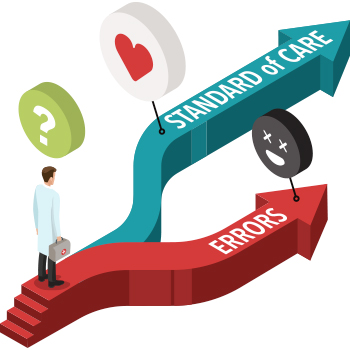
Fortunately, most births in the United States are complication-free. But in my practice, I primarily deal with parents whose child was diagnosed months or even years after birth with cerebral palsy, and who suspect medical error may have played a part. I have investigated some 15,000 of these cases over the years. As a result, I have learned there are certain events or circumstances that occur in labor and delivery situations that, if a child is diagnosed with brain injury, should merit further investigation. These include:
- A problem during labor or delivery that was either clearly an unexpected or emergency situation, such as unrelenting pain, bleeding or absence of activity by the fetus.
- A situation in which parents sensed that doctors and nurses were worried, that something wasn’t “right,” that resulted in a change in procedures (i.e., when an expected routine delivery develops complications).
- When questions about labor and delivery complications are sidestepped, referred up the ladder or stonewalled.
- When hospital personnel delay or refuse to provide medical records following labor and delivery.
In my experience, parents who sensed that something went wrong during their labor and delivery are usually right. But was it a preventable medical error? Doctors and other staff are supposed to follow what are known as Standards of Medical Practice to help ensure patient safety. When we evaluate a case, we look for evidence that these standards were followed. Following are some of the standards we review in relation to labor and delivery:
- A woman entering the hospital for a normal delivery should be hooked to a fetal heart monitor within one hour of entering the hospital. A woman expecting problems with her delivery should be hooked up even sooner.
- A woman entering the hospital experiencing unrelenting pain, bleeding or cessation of activity by the baby should be seen by a doctor immediately.
- A woman in the labor and delivery room should have an IV inserted and ready to go, even if no fluids are expected to be needed.
- If any problems develop with the fetal heart monitor, a woman should be switched to an internal monitor.
- If given pitocin, a laboring mother should expect an internal pressure catheter to also be employed.
- If the baby’s baseline heart rate drops below 110 for 60 seconds or longer, a physician should be called and should arrive within 30 minutes.
- If a laboring mother is placed on oxygen or advised she should lie on her left side, she should be seen by a physician within 30 minutes.
- Parents should be consulted prior to use of vacuum or forceps and should be informed of the risks. Their decision to have a C-section should be respected.
- There should be no more than a 10-minute delay between administration of spinal anesthetic and delivery.
- The fetus should continue to be monitored after the placement of an epidural. If the epidural is being used for a C-section, the fetus should be monitored until surgery is ready to proceed.
- A pediatric team should be available in the delivery room to provide any necessary resuscitation of a child as the result of a problem delivery.
If these standards were not followed and your child was later diagnosed with a brain injury, you may want to consult a qualified attorney to look into the possibility of preventable medical error.
